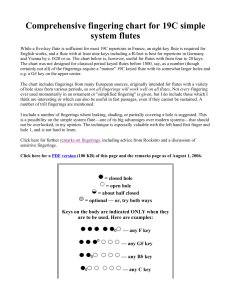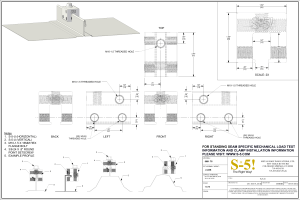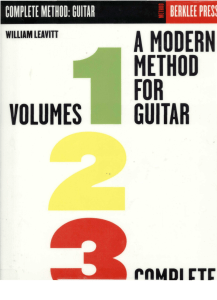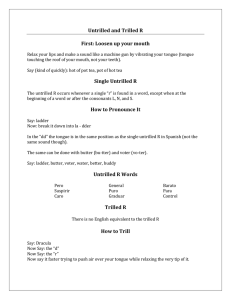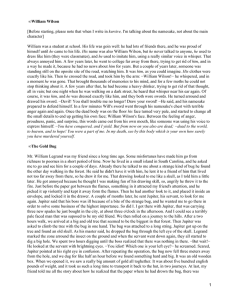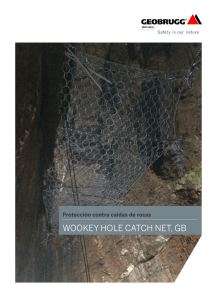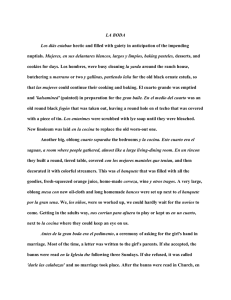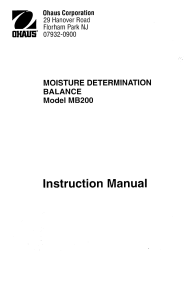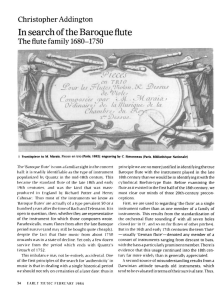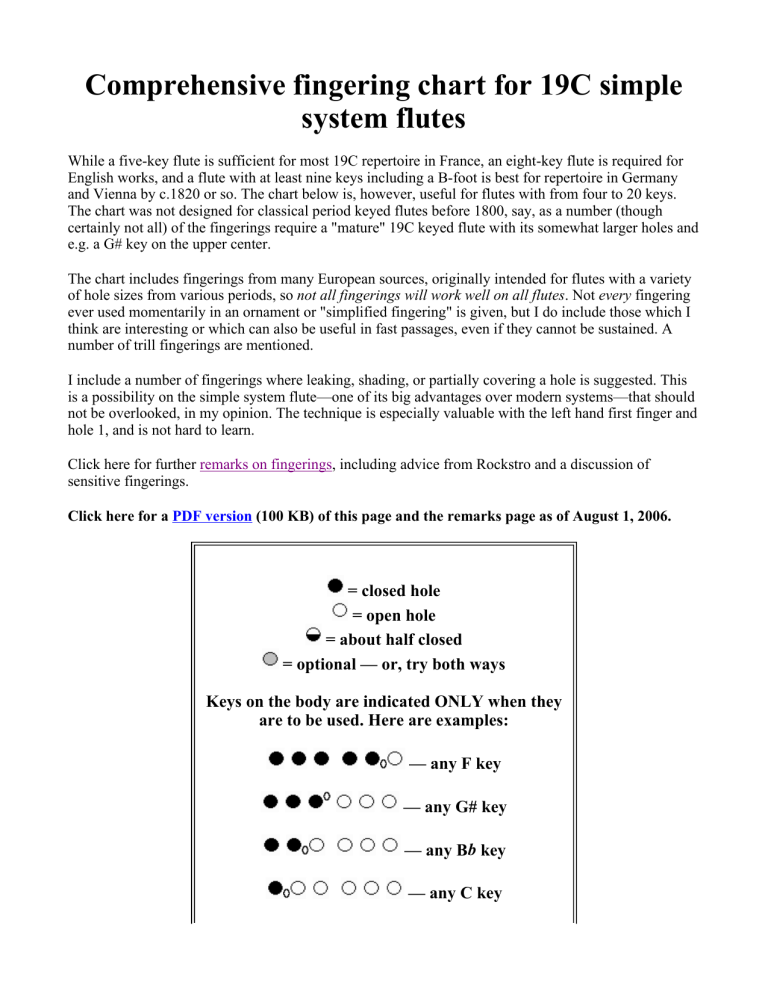
Comprehensive fingering chart for 19C simple system flutes While a five-key flute is sufficient for most 19C repertoire in France, an eight-key flute is required for English works, and a flute with at least nine keys including a B-foot is best for repertoire in Germany and Vienna by c.1820 or so. The chart below is, however, useful for flutes with from four to 20 keys. The chart was not designed for classical period keyed flutes before 1800, say, as a number (though certainly not all) of the fingerings require a "mature" 19C keyed flute with its somewhat larger holes and e.g. a G# key on the upper center. The chart includes fingerings from many European sources, originally intended for flutes with a variety of hole sizes from various periods, so not all fingerings will work well on all flutes. Not every fingering ever used momentarily in an ornament or "simplified fingering" is given, but I do include those which I think are interesting or which can also be useful in fast passages, even if they cannot be sustained. A number of trill fingerings are mentioned. I include a number of fingerings where leaking, shading, or partially covering a hole is suggested. This is a possibility on the simple system flute—one of its big advantages over modern systems—that should not be overlooked, in my opinion. The technique is especially valuable with the left hand first finger and hole 1, and is not hard to learn. Click here for further remarks on fingerings, including advice from Rockstro and a discussion of sensitive fingerings. Click here for a PDF version (100 KB) of this page and the remarks page as of August 1, 2006. = closed hole = open hole = about half closed = optional — or, try both ways Keys on the body are indicated ONLY when they are to be used. Here are examples: — any F key — any G# key — any Bb key — any C key The footjoint in our diagrams depicts the D#, D, C#, and C holes of a B-foot. Since the D# key is closed-standing, that key must be depressed for , and released for . b c' c'# d' Flat on many flutes. e'b e' f' f'# g' g'# a' b'b b' c'' The D# key should be open whenever possible except on French flutes and some early 19C German flutes. Use (1) whenever possible, but sometimes (2) is 1 necessary. The D# hole is best open for (1) except on 2 French and early German flutes. 1 With (1), keep an F key open whenever possible! (2) is a sensitive note to g', but is too sharp, and weak. 2 1 (2) or a slight variant can be used as a sensitive note to a'b on some flutes. 2 (2) should be used only on smallish holed flutes when 1 (1) cannot be used; e.g. as an a'b after an f' with the long 2 F key. (1) may tend to be sharp, esp. on large-holed English 1 flutes. (2) may serve as a sensitive note on small-holed 2 flutes. (2) is to be avoided, but on a small-holed flute it can 1 useful in alternating with f'(2) (with holes 4 and 6 2 closed) and with g'(1) (with holes 4 and 6 open) in fast figures. (1) can be sharp on large-holed English flutes; try adding 1 some right hand fingers. (2) can be used for color, on a 2 long note. (1) is the best fingering on all but French flutes and some early 19C German flutes; it tends to be sharp, but 1 when well managed matches the other notes and can even be quite reedy when desired. (2) is for the trill with 2 b' and in some passages with high note c''. (3) is to be 3 avoided, except on French and some early German 4 flutes. (4) is very useful in alteration with a'b and/or a''b. (5) should be avoided, but is useful in ornaments like the 5 c''# d'' e''b e'' f'' f''# g'' g''# a'' b''b 6 turn on b'b (where the Bb key remains open) and some fast figures in the first octave. (6) has an interesting 7 color. (7) is recommended by Rockstro; it works for c''' as well. 1 Sometimes (2) gives more sonority than (1); cover any two or all three of the right hand holes. (3) is an 2 excellent sensitive fingering; it is sometimes better with 3 hole 1 partially closed. Flat on some, but not all, flutes. Hole 1 may be partially covered. There are many passages which are simplified by covering all of hole 1. On some flutes, tends to be flat. Except on French flutes and some very early 19C flutes, the D# key should be open whenever possible (esp. on Viennese flutes). 1 Use (1) whenever possible. The D# hole is best open for (1) except on French and early German flutes. 2 With (1), keep an F# key open whenever possible! (2) is 1 a sensitive note to g'', but can be too sharp if one is not 2 careful; on a large-holed and some medium-holed flutes, do not use the D# key. (2) is an excellent sensitive note to a''b and otherwise 1 useful in some passages; it may be found in Monzani, 2 and Nicholson recommends its use in F minor. 1 (1) is the standard fingering; open the C key for an a''# or b''b, which tends to be flat but which gives a useful 2 trill. (2) is good as a sensitive note on small or medium3 holed flutes. (3) is the one-key fingering, and to be avoided. (4) can have a good effect as a sensitive note, if 4 the holes are not too small, and one can trill with RH1, 5 or both RH1 and RH2. (5) is a sensitive note to a''(3). 1 (1) is the standard fingering. (2) is given by Fürstenau; it is sweet, and always good for a delicate upbeat or a 2 sustained piano. (3) is sometimes good in alteration with 3 g''#(1) or g''#(5). (4) is an excellent sensitive note between two b''b(1)'s, or in a trill, unless the holes are 4 too big or too small. (5) is very sharp but good as a 5 sensitive note between two b''b(2)'s. (1) is standard, but (2) is a good note and was used 1 often; it tends to be sharp, but is excellent with c'''(1). (3) is good for an a''# sensitive note unless the holes are too 2 small or too large. (4) is a bit flatter than its relative (2) 3 and may be useful in alteration with a''b(1); open hole 1 4 for c''', which allows a good c'''/b''b trill, useful with a''b in the termination. b'' c''' c'''# d''' 1 (2) is recommended by Fürstenau (with hole 3 closed); good with c'''(3). (3) is sharp but speaks easily, and is 2 good for a light upbeat or a sustained piano. (4) is a 3 harmonic of e'; may be sharp; useful in ornaments. (5) is good as a sensitive note to c'''(5), and sometimes for a 4 trill (nice in piano) with c'''# using RH2 and RH3; adjust 5 the partial covering of hole 1 to taste. (6) can be used for a trill with a'' using the long C key, or for fast alteration 6 or a trill with c'''# by raising LH1 and LH2 (leaving the 7 C key depressed). (7) is often too sharp. (1) is the standard fingering. (2) is for trills with b'', and 1 some passages with high note c'''. (3) recommended by 2 Fürstenau, but tends to be sharp; speaks best with hole 2 open; good in alteration with b''(2). (4) is a harmonic of 3 low F; tends to be sharp with the D# key open; speaks 4 better with hole 2 open; keep hole 2 closed and the D# key open when trilling d'''/c''' with RH1 and RH2. (5) is a 5 good sensitive note to d'''b(1) and an excellent b''#; it 6 makes a fine trill with d''' (use RH1 and RH2 for the trill, 7 and b''(5) for the turn); adjust the partial covering of hole 1 to taste. (6) is just for completeness. (7) may have an 8 interesting color; good for a leap from c'; open hole 5 for 9 a d'''b. (8) is recommended by Rockstro; it works for c'' too. (9) is only used in alteration with b''b, e.g. in a trill A with LH1. (A) is for use with b''b(4). (1) is the most common 19C fingering; shade or partially 1 cover hole 1 if too sharp or when trilling d'''/c'''# with RH1. (2) is good on many flutes; it often speaks better 2 with hole 3 closed; and on some flutes, close hole 2 as 3 well. (3) is a nice note. (4) tends to be flat. (5) is convenient once in a while. (6) is good as a sensitive 4 note to d'''(2) or as an octave to c''#(3); hole 1 may be 5 partially covered. If one opens the Bb key on (6), an often poor e'''b/d'''b trill may be then obtained with RH1 6 and RH2; try it with the low C key closed too. (7) may 7 be good for some trills and possibly in a chromatic passage (d''' can be played with a C key open). (1) is the best fingering; an F key or the low C# key may be used rather than the D# key; cover hole 1 partially if 1 used with c'''(5) or e'''b(3). (2) is good for octaves with d''. With hole 5 closed, alternate with e'''b using the D# 2 key. An awkward trill with e''' is available by partially 3 covering hole 1 and trilling with LH3 and RH1 (and maybe RH2). (3) is flat; only good slurred between two 4 c'''(1)'s. (4) is sharp, but very good as a sensitive note to 5 e'''b. (5) may be used for an e'''b/d''' trill with RH1, or an e'''/d''' trill with LH3 and RH1 (awkward); hole 1 may be closed or leaked. (1) is the most common 19C fingering; it can be on the e'''b 1 flat side. (2) can be a very good note, smooth in alteration with g'''. (3) can be used between two e'''(2)s. 2 (4) A good sensitive d'''#; Nicholson gives it with hole 4 3 closed for use in E major. (5) may be good between two d'''s. (6) is only useful when slurred to from d'''(1) or c'''# 4 (1), and can be used for e'''b/d''' and d'''#/c'''# trills. 5 6 e''' f''' f'''# 1 (1) is the most common 19C fingering; leak hole 1 if it is flat. (2) is sharper; good as the octave to e'' and in 2 passages e.g. with f'''(1) with the short F key. It can be 3 played without the G# key in some contexts. (3) is only useful when alternated with d''', or in the e'''/d''' trill, if 4 the e'''/d''' key is not present. (4) is sharp; good only as a 5 sensitive note. (5) is a harmonic of low c'. (6) may be useful when adjacent to e.g. c'# or a''(2 or 3). 6 (1) is often good, but can be a bit flat. (2) is often given 1 in English sources; but a bit awkward. (3) can be a little sharp and does not speak well on all flutes, but is very 2 useful; Monzani recomends the G# key to be open as 3 well. (4) is the one-key fingering and is good on French and many German flutes, but not on English flutes; 4 shade hole 5 if it is too sharp, but one can also sharpen it 5 with the Bb key for use as a sensitive e'''# between two 6 f'''#(1)'s. (5) is good only between two e'''s, as in a trill. (6) is only useful in the g'''/f''' trill (with RH1 and RH2). 7 (7) and (8) are harmonics of low d'b. Both can be used 8 for awkward g'''/f''' trills; use LH1 and LH2 (and RH2, if possible) with (7) and all three LH fingers with (8). 1 (1) is usually best, often with hole 6 closed; but on some earlier flutes, speech is better with hole 6 open. (2) 2 works well on some flutes; try hole 3 both ways, or 3 leaking. (3) is very good on some small and mediumholed flutes (e.g. French flutes); also try this fingering 4 with the Bb key open. (4) and (5) are good sensitive 5 notes to g'''. Use (6) in alteration with e'''(2); good for the f'''#/e''' trill with LH2 and LH3. (7) in alteration with e'''# 6 (1); good for the f'''#/e'''# trill with LH2. (8) is useful 7 only quickly between two e'''(1)'s; use for a quick f'''#/e''' trill, or at the top of a figure. 8 (1) is usually best; an F key may may be opened, or left open, and/or hole 6 closed, if convenient. (2) may be used if (1) is found too flat in some contexts; with hole 4 open, a good sensitive note to a'''b. (3) does not always 1 speak well, but if it does, good with f'''#(4) or in a leap 2 from b''(3) (same fingering). (4) is only good in alteration with f'''#, as in a trill. (5) is never good (too 3 g''' g'''# a''' b'''b b''' c'''' 4 sharp, doesn't speak well), but must be used for the a'''/g''' trill (with the two foot keys) unless Schwedler's 5 trill key is available. (6) tends to be sharp; an option as a 6 leap from a C with the foot keys closed. (7) Of theoretical interest only. An F key will sharpen it. (8) Of 7 little interest, except for use in a g'''/f''' trill, with fingers 8 LH1 and LH2; difficult of speech and a bit flat when sustained. (1) tends to be flat; hole 3 can be uncovered partially. (2) 1 is better, and hole 3 may still be leaked if necessary; also try hole 5 closed and hole 6 open. the pitch is higher 2 with just 5 covered. (3) is good as a sensitive note to a'''. 3 (4) is difficult of speech, but good for the trill with a''' or 4 as a sensitive note; adjust covering of hole 1 to your own taste. (1) may be sharp; shading holes 1 and 6 may help a 1 little. (2) often speaks better than (1), but tends to be 2 sharp; often better with hole 6 open; shading hole 1 may help. (3) is somewhat flatter; can be good on late flutes, 3 in a forte, or in a trill with g'''#(3). (1) is the basis for all b'''b fingerings that I know, but is almost never best; still, it can be used between two a'''s; 1 hole 3 may be left closed if absolutely necessary. (2) 2 may work as given, but one MUST experiment: start with (1) and try opening one or both of the G# and F 3 keys, and partially or completely covering hole 1. For 4 example, (3). (4) is good on small-holed flutes; also try 5 partially covering hole 5. (5) only works on large-holed flutes. (6) works OK on some early German flutes with 6 the G# key on the lower center, but is often flat on others. Fingering (1) is good on earlier flutes, but it is awkward 1 because the short F key must be covered by RH2, not the 2 usual RH3, if the short key is used; try shading hole 4. (2) is a common late 19C fingering. (3) is Nicholson's 3 fingering; good for large-holed flutes. (4) is given by 4 Monzani and Drouét, and is recommended by Rockstro for small-holed flutes. (5) is from Dressler; tends to be 5 flat, but try leaking hole 1. Try (1) first; then experiment with (1), (2), and (3). It 1 may help to shade or cover half of hole 4. (3) can be awkward but is often nice; try the Bb key instead of the 2 G# key, or neither key. Try using the low B key as a 3 "gizmo" on fingerings (1) and (5), but it often makes 4 little difference. (4) works on some esp. French flutes; a bit sharper than previous fingerings. (5) is good on some 5 late flutes, but may be on the flat side. (6) is a variation 6 on (5); Monzani says to open the G# key as well; try it 1 c''''# 2 3 4 1 d'''' 2 3 4 e''''b 1 2 e'''' 1 2 f''''# g'''' with hole 5 closed rather than 6, and/or without the D# key; (1) is an attempt to sharpen the c'''' by opening every key. (2) is in Nicholson; given by Drouet with both F keys open (not shown). (3) from Burose, with the e'''/d''' trill key open (not shown). (4) is a very awkward fingering (found on a Ziegler chart), but it can work surprisingly well (best using a thumb G# key, of course, since LH4 must operate the low B key). (1) is often good, but one must have a flute where it is possible to close the low C# key while simultaneously opening the D# key. (2) is good on French or other small-holed flutes with hole 4 open. (3) works on German or Viennese flutes with a side low B key. (4) is given by Drouet with both F keys open (not shown); works on some French flutes. (1) works on large-holed English flutes. Try (2) for other flutes; also try using the side low B key, if present, to close the low C hole. Start with (1) and experiment with opening, in addition, one or more of the other keys; also try hole 6 open. (2) is from Burose, with the low Bb key also closed (not shown); also try with hole 2 half-closed. Used by players of Cuban charanga, on 5-key French flutes. Experiment with the keys. Tends to be flat. Used by players of Cuban charanga. Check www.wfg.woodwind.org/charanga for more more charanga fingerings. Click here for further remarks on fingerings, including advice from Rockstro and a discussion of sensitive fingerings. © Copyright Richard M. Wilson, 2003, 2004, 2005, 2006. Fingerings may be added or edited from time to time. Check back every day. (Just kidding about every day.) This version: August 1, 2006. Click here to return to the Fingering Charts index. Remarks on 19C fingering The 19th century simple system flute is an amazing device. In addition to the possibilities provided by the keys, one may still use the techniques of forked fingerings and partial covering of holes. A huge palette of pitches and timbres are available. I find that medium-holed flutes have the most flexibility in this regard, though harmonics and partial covering work very well on large-holed flutes. What goes on inside the bore with some of these fingerings must be incredibly complex. (The instrument has been used, and could well be further exploited, by contemporary composers and players who wish to experiment with timbre and pitch. It would be relatively easy to create quarter-tone scales or third-tone scales, etc.; but a problem is that each flute would need somewhat different fingerings.) In the late 19th century, ideas and flutes were changing and players are advised (by, e.g., M. Schwedler) to limit the number of fingerings they used. It is always advisable to learn selected fingerings well rather than always trying to rely on alternate fingerings to solve technical problems. It is perfectly possible to play 19th century music without alternate fingerings. But there is no doubt that the virtuoso players of the early and mid-19th century used and reveled in a multitude of fingerings. This can be seen by studying the methods and tutors they wrote. Click here for www.flutehistory.com's list of flute methods. A number of these are available in modern facsimiles. The methods allow one to understand a particular player's "system" of fingering (on the type of flute they used) in a way that a comprehensive fingering chart cannot. The various fingerings were used to simplify finger motions and otherwise increase smoothness of some passages (e.g. by avoiding register breaks), to ease intonation difficulties or change intonation for expressive purposes, to control dynamics, and to produce different timbres. A number of third-harmonic fingerings (unassisted, assisted, or sharpened by extra venting) are particularly useful. The following is taken from Sections 781–2 of Rockstro's Treatise on the Flute of 1889. (There is no Rule III. I don't know why.) I am aware that some persons are opposed, in theory, to any departure from the ordinary fingering of a flute, but as all the best flute-players, from the time of Hotteterre, have been glad to avail themselves of all the resources of their instruments, and as not one of the opponents of the use of extra fingerings has been able to carry out his ideas with success, it must be accepted as a fact that occasional changes are indispensable. In the selection of extra fingerings the following general rules should be observed: I. Never use different fingerings, which cause an alteration of pitch, for similar notes that are near each other. II. Do not select a sharp fingering for one note, and a flat fingering for another which is adjacent to it, but on the contrary, choose a set of sharp, or a set of flat notes, so that all may be corrected together by a slight change in the method of blowing. IV. For slow music, select the fingerings which give the best notes, no matter how difficult they may be. Indifferent notes may occasionally be tolerated in very rapid passages, for the sake of smoothness and facility. V. Avoid all unnecessary changes. The chief object of extra fingerings being the preservation of smoothness, they will be needed comparatively seldom in staccato passages, for which many of them would indeed be wholly unfitted. VI. Use the harmonics (unassisted by vent-holes) of the second and third series, only as a last resource. ... VII. Any finger-holes may be kept closed during the performance of rapid passages, provided no appreciable injury to intonation or tone be caused by such closing. A sensitive note (note sensible, in French) is a note that is raised in pitch, by perhaps 1/3 of a semitone, in order to narrow the interval with the note a written semitone above. One does not see this concept explicitly named in the 19th century German sources that I know, but fingerings that give sensitive notes are included and often used in the same situations. The change in fingerings from the sensitive note to the one above is supposed to be easy; one wants a smooth transition. (This is important even if the interval is not narrowed.) An excellent example of a sensitive note is the c''# given by closing the low C# key while fingering d'' as -23456. This is sharper than the normal c''# with all holes open, and can be alternated with d'' easily. Here are some typical instances in which sensitive notes may be used: z z z z As leading tones in scales. Between two notes a semitone higher. In some cases, appoggiaturas from below. As the lower auxilliary in turns, trill terminations, and other ornaments. Here are some figures extracted from a Walckiers duet where sensitive fingerings may be used for the notes that I have marked "S". The first figure provides a chance to use 123-56 (no key) for d'''. Try fingering the first and third notes of the second figure as 12-456k and use 12-456 for the a'' between them. For the b'' in the third figure, use 1--456k. Try 123-56 or 123-56k for the f''# in the fourth figure; but it may not work so well on every flute. I find that the figures sound better with these irregular fingerings, not that I remember to, or bother to, use them all the time. (Also, on the third figure, try 1-34-6k, 1-3456k, 1-34-6k, -23---k, and then open the G# key for the e'''b. The b'' is not sensitive, but the figure is smooth.) Rockstro (1889) remarks that notes may be advantageously lowered when between two notes a written semitone below. Rockstro was an opinionated advocate of the modern flute but still used these 19th century inflections. This is from Section 767 on "Altered Semitones". ...there are certain cases in which a slight and temporary departure from [equal temperament] may be permitted. These cases result in the lessening of a semitone, either by raising the lower, or depressing the upper, of the two notes which form the boundaries of the interval, thus causing some approach to the semitone of Pythagoras .... This reduction of the semitone, if not carried to an extreme, is generally as agreeable to the ear as the slightest enlargement is offensive, but on no account must a note be raised or lowered when it forms an integral part of the accompanying harmony, or when it is near to a similar note which not so altered from its normal pitch. The raised lower note the semitone is known in France, where it is much used, as the "note sensible," or sensitive note. I know of no technical name for the depressed upper note of the interval. In the following example, Rockstro uses "S" to indicate a note to be sharpened and "F" a note to be flattened. Sensitive notes must never be so sharp that they sound out of tune. Do not hesitate to attempt to correct the intonation of sensitive fingerings that may go too far in narrowing the interval. The smooth effect, and color, is more important than the exact interval. In many instances, I like a change of color in a sensitive note: a softer, more veiled or sweet sound than the upper neighbor. It is important that the listener feel—if the listener is explicitly aware at all—that this play with intonation is being done purposefully, to tease or flatter. Click here to return to the simple system fingering chart.
